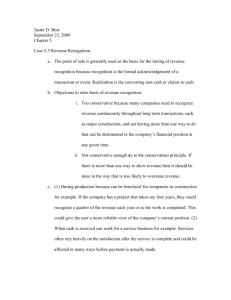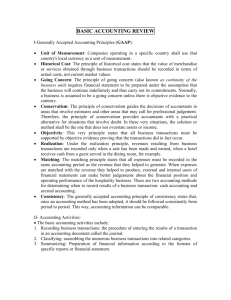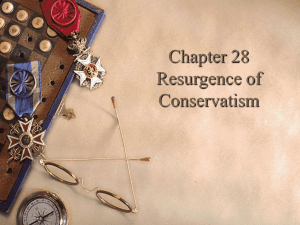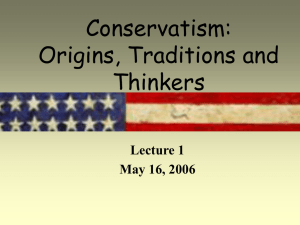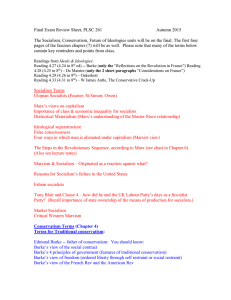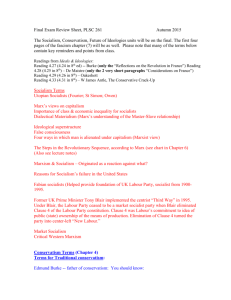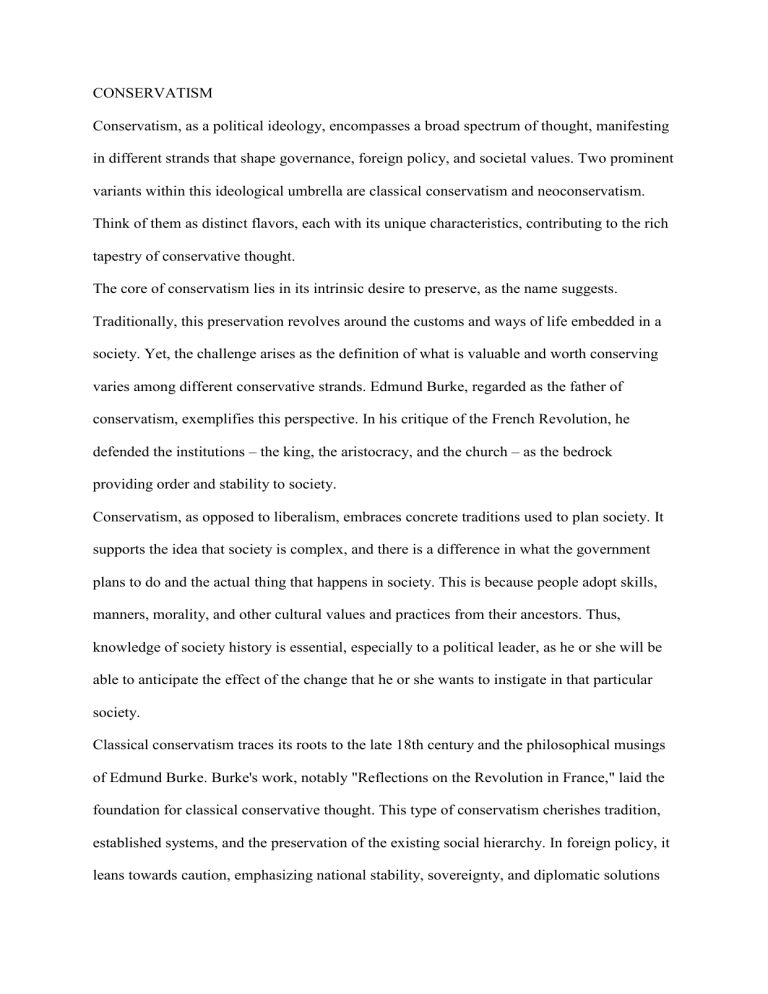
CONSERVATISM Conservatism, as a political ideology, encompasses a broad spectrum of thought, manifesting in different strands that shape governance, foreign policy, and societal values. Two prominent variants within this ideological umbrella are classical conservatism and neoconservatism. Think of them as distinct flavors, each with its unique characteristics, contributing to the rich tapestry of conservative thought. The core of conservatism lies in its intrinsic desire to preserve, as the name suggests. Traditionally, this preservation revolves around the customs and ways of life embedded in a society. Yet, the challenge arises as the definition of what is valuable and worth conserving varies among different conservative strands. Edmund Burke, regarded as the father of conservatism, exemplifies this perspective. In his critique of the French Revolution, he defended the institutions – the king, the aristocracy, and the church – as the bedrock providing order and stability to society. Conservatism, as opposed to liberalism, embraces concrete traditions used to plan society. It supports the idea that society is complex, and there is a difference in what the government plans to do and the actual thing that happens in society. This is because people adopt skills, manners, morality, and other cultural values and practices from their ancestors. Thus, knowledge of society history is essential, especially to a political leader, as he or she will be able to anticipate the effect of the change that he or she wants to instigate in that particular society. Classical conservatism traces its roots to the late 18th century and the philosophical musings of Edmund Burke. Burke's work, notably "Reflections on the Revolution in France," laid the foundation for classical conservative thought. This type of conservatism cherishes tradition, established systems, and the preservation of the existing social hierarchy. In foreign policy, it leans towards caution, emphasizing national stability, sovereignty, and diplomatic solutions over military interventions. Socially, classical conservatism champions traditional values, resisting rapid societal changes, and promoting conservative family structures. On the economic front, it aligns with minimal government intervention, prioritizing free-market principles and reduced regulations. Classical conservatives envision a government with a limited role, preserving tradition and societal order with minimal interference. It seeks to maintain order with minimal interference in personal affairs. Neoconservatism emerged as a response to liberal ideologies in the mid-20th century. Figures like Irving Kristol, Norman Podhoretz, and Paul Wolfowitz have significantly contributed to shaping this ideology. Neoconservatism is ready to mix things up, focusing notably on foreign policy. Neoconservatives advocate for a proactive and interventionist approach. Military force, if necessary, becomes a tool to spread democracy and safeguard American interests globally. Unlike the cautious stance of classical conservatism, neoconservatism engages pragmatically with social issues, occasionally compromising on values to achieve broader foreign policy objectives. Additionally, it showcases a higher tolerance for government intervention, especially in funding military and foreign policy initiatives. These differences have profound implications for governance, foreign policy, and societal values. The neoconservative approach to foreign policy, characterized by proactive intervention, had significant consequences in the early 21st century, notably with the Iraq War. While praised for promoting democracy globally, critics raise concerns about the costs and unintended consequences of such interventions. The practicality of spreading democracy through military means remains a subject of debate, with classical conservatives expressing reservations about compromising traditional values. Edmund Burke's writings, notably his work "Reflections on the Revolution in France" (1790), provide a foundational understanding of conservatism. For Burke, the French Revolution represented a perilous departure from established institutions in favor of untested theories. He argued that change, while inevitable, should occur gradually and through piecemeal reform to maintain societal health. Burke's perspective set the stage for a core tenet of conservatism: a cautious approach to innovation. While Burke's conservative vision emphasized the preservation of traditional societal structures, conservatives across history have held diverse views on what is worth conserving. In the 19th century, conservatives generally opposed liberalism and democracy, blaming these ideologies for disrupting the established social order. The emphasis on the individual in liberalism clashed with the conservative belief that individuals are integral parts of a larger societal whole, with duties to one another. This perspective contends that when everyone pursues individual interests, society deteriorates, with a focus on material pursuits and a reduction of culture, literature, and religion to the lowest common denominator – money. Democracy, according to conservatives, poses another threat. Burke and his followers believed that humans are ruled more by passions than reason, and granting governance to the people risks chaos and anarchy. Democracy, at its worst, leads to a leveling of society, where everyone is reduced to the same condition. This fear of "mass society" has persisted through the ages, echoed by thinkers like José Ortega y Gasset in the 20th century. Around this time, an alliance formed between classical conservatives like Michael Oakeshott and modern conservatives like Margaret Thatcher and Ronald Reagan. This alliance, driven by a shared respect for private property, an acceptance of democracy, and a fear of communism, faced strains as the communist threat waned. However, as the Cold War ended, internal divisions among conservatives surfaced. The tension between those advocating for limited government intervention and those emphasizing moral values, such as the Religious Right in the U.S., underscored the diverse ideological landscape within conservatism. In the twenty-first century, conservatism has taken on various forms. The Religious Right, characterized by evangelical Protestants in the U.S., emphasizes social conservatism and moral values. Meanwhile, the "neoconservatives" advocate for a robust foreign policy and interventionism. The election of figures like Donald Trump has added new layers of complexity, prompting conservatives to confront questions about the essence of their ideology. As conservatism diversified, questions about its meaning intensified, particularly with figures like Donald Trump. The variations within conservatism, from the Religious Right to neoconservatives, highlight the ongoing debates within the ideology. The challenge remains: while conservatives unite under the banner of conserving something, defining what that "something" is and how to preserve it continues to be a subject of internal discord within the conservative movement. REFERENCES Heywood, A. (2007). Political ideologies: An introduction (4th ed.). Palgrave Macmillan. IvyPanda. (2022, May 13). Modern Conservatism Political Ideology. https://ivypanda.com/essays/conservatism-political-ideology/ Rejai, M. (1995). Political ideologies: A comparative approach (2nd ed.). M.E. Sharpe. Ball, T., Dagger, R., & O’Neill, D. (Eds.). (2020). Ideals and ideologies: A reader (11th ed.). Routledge.
